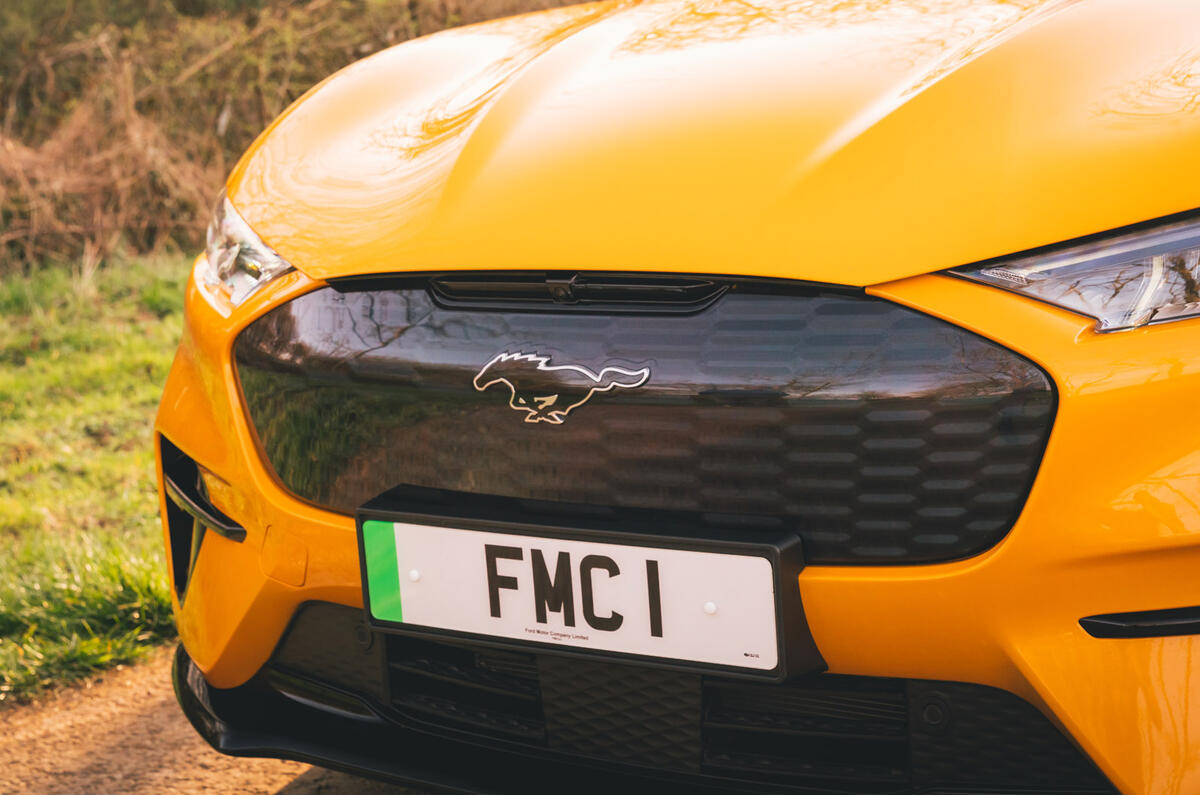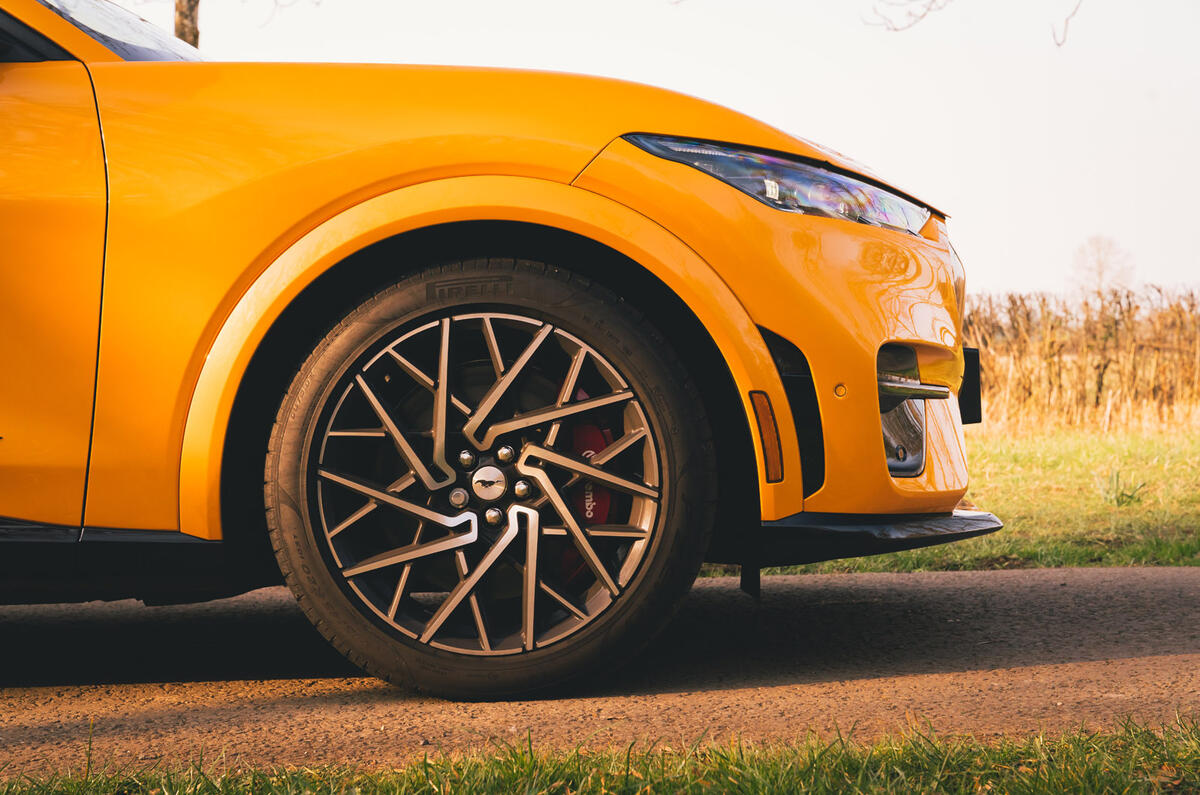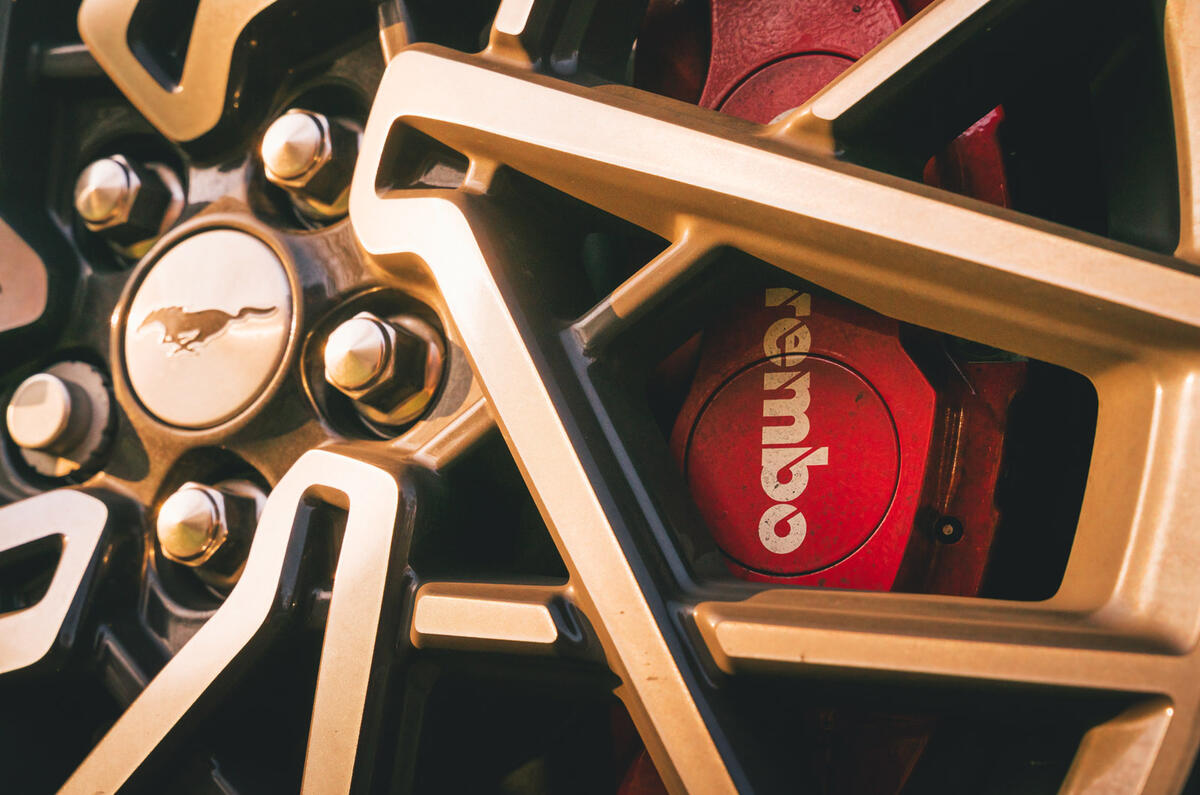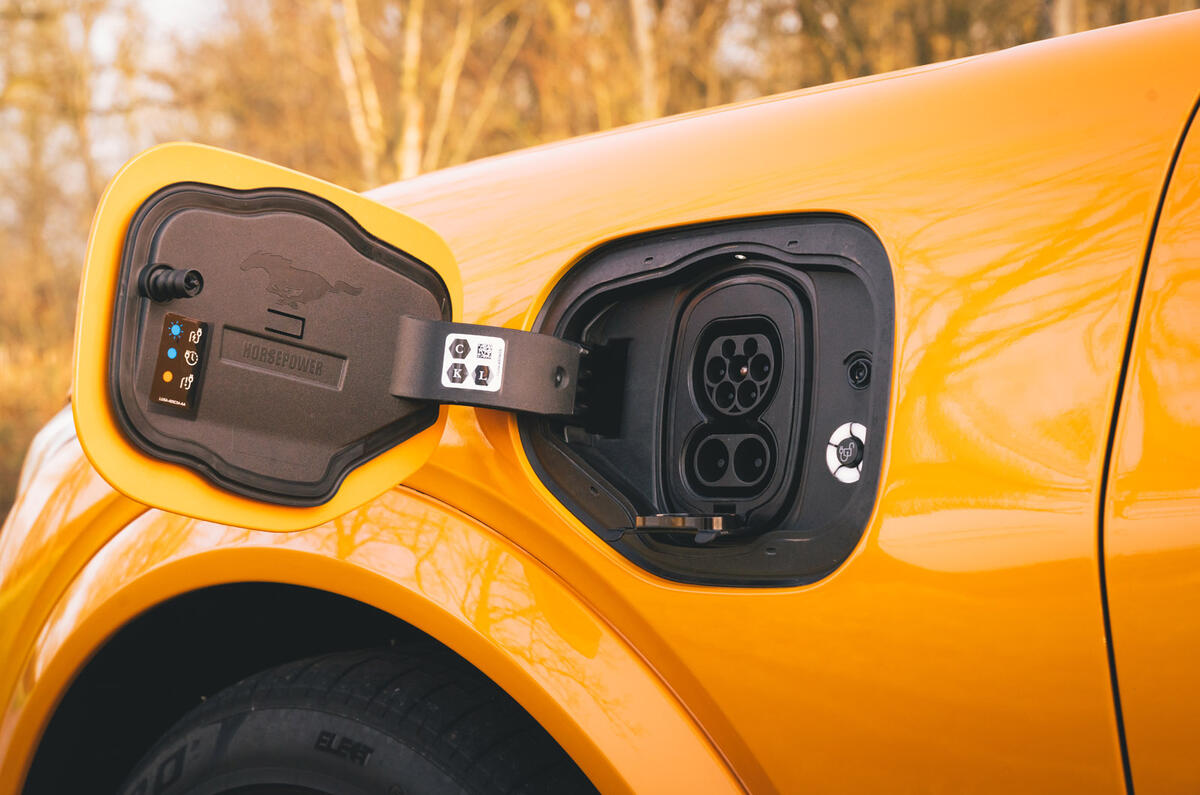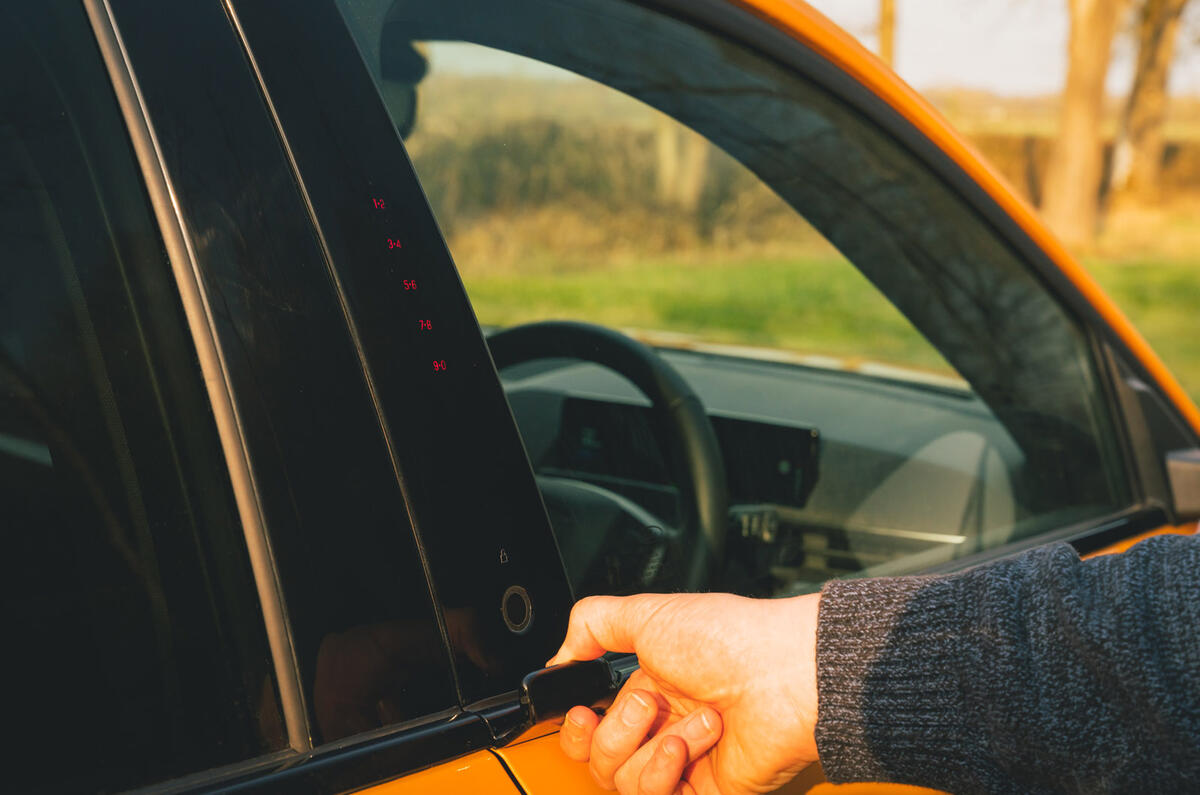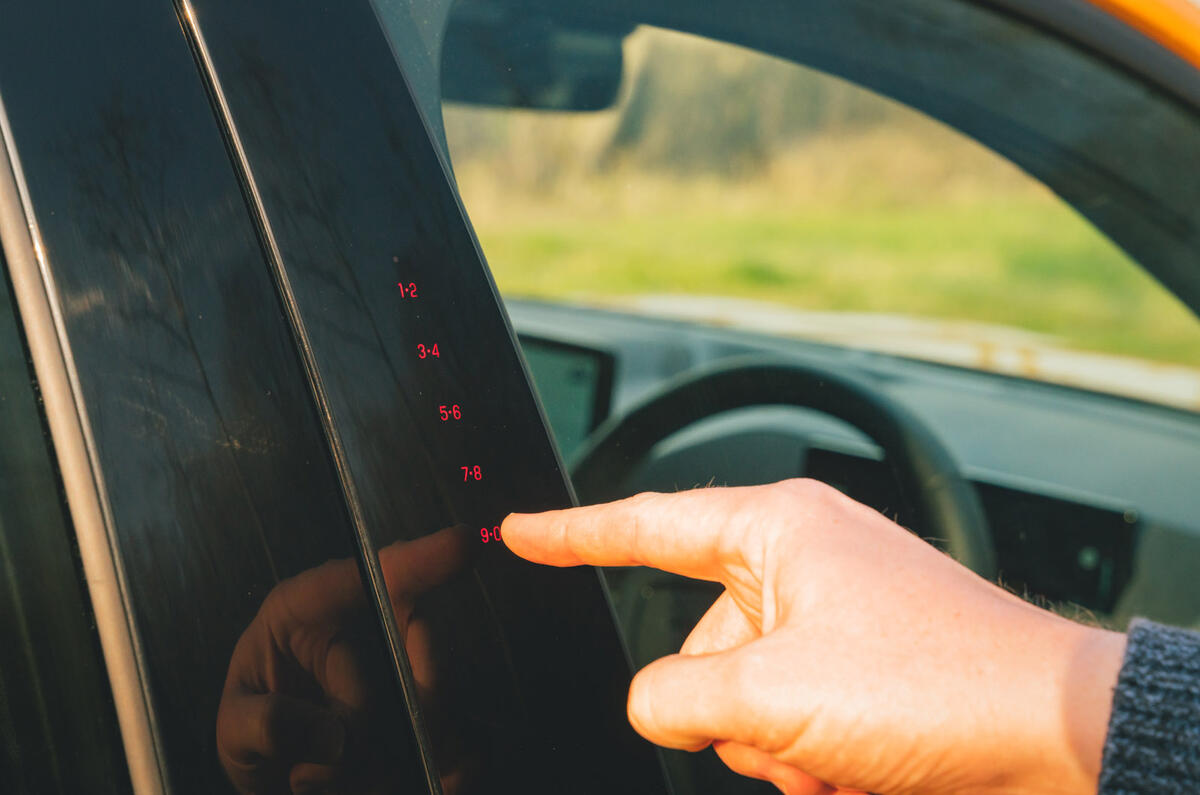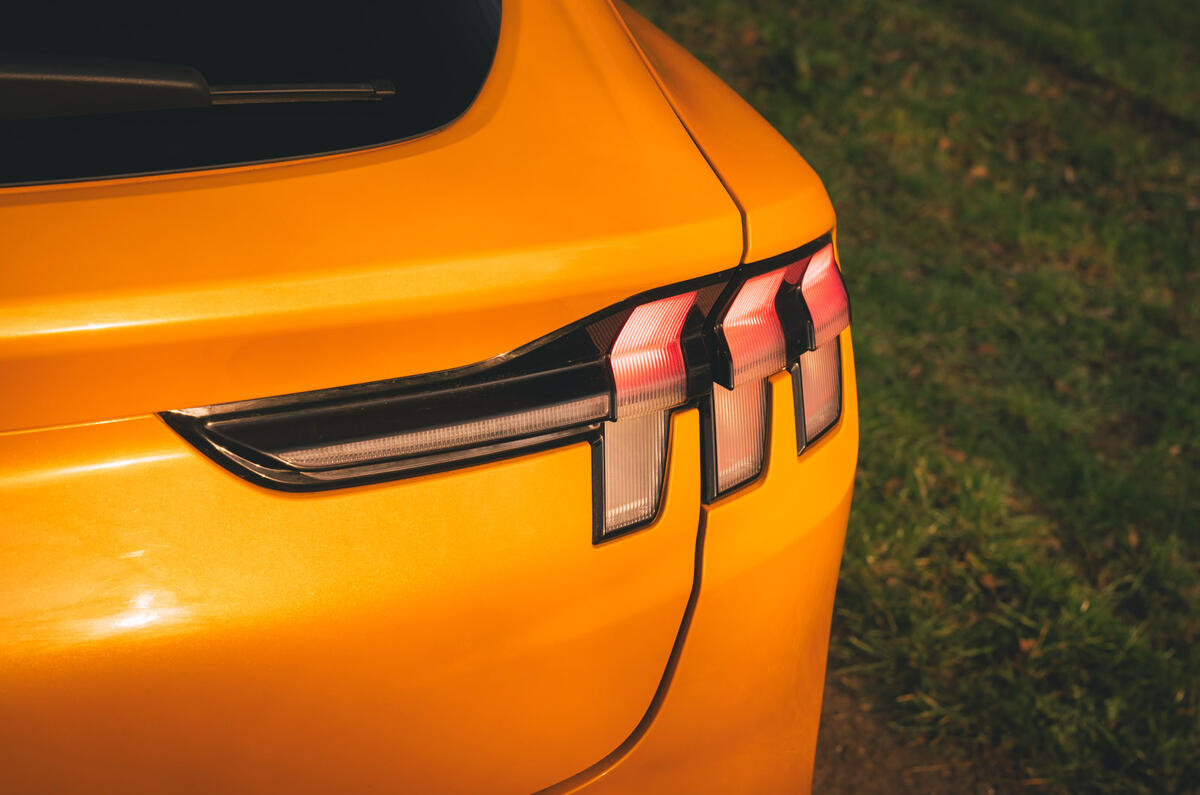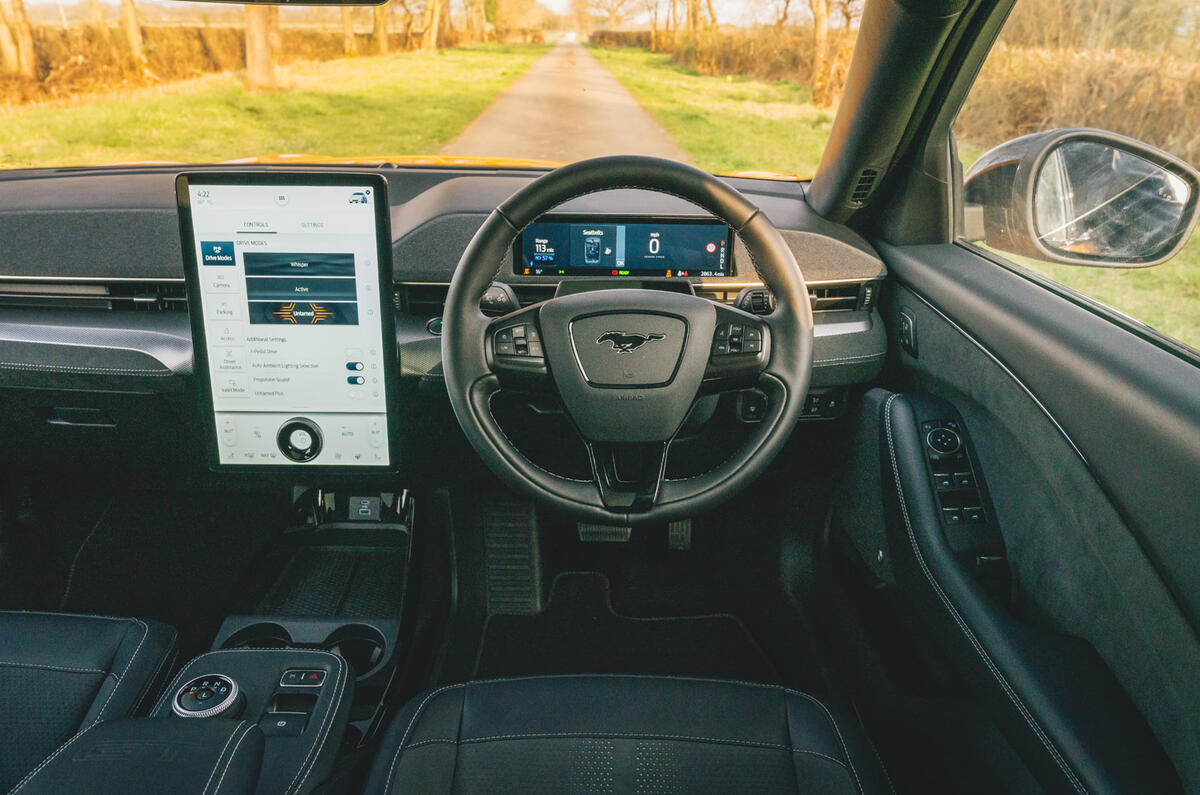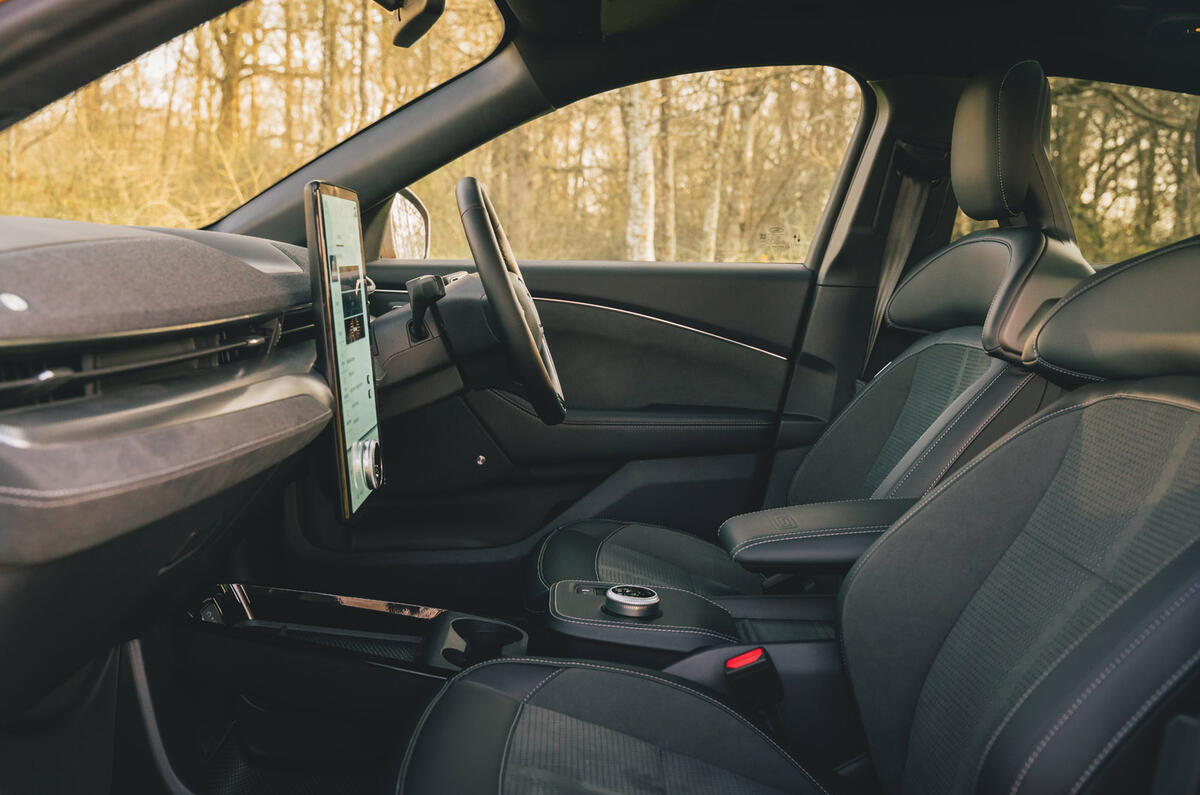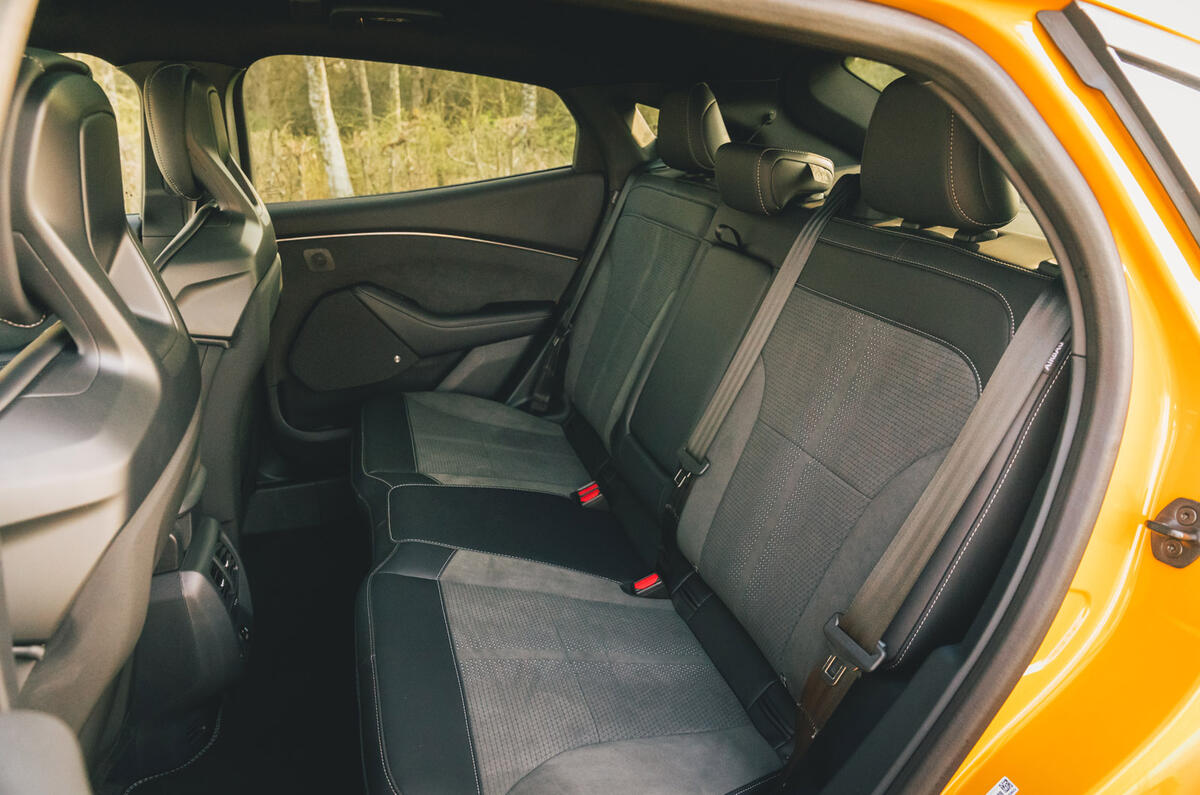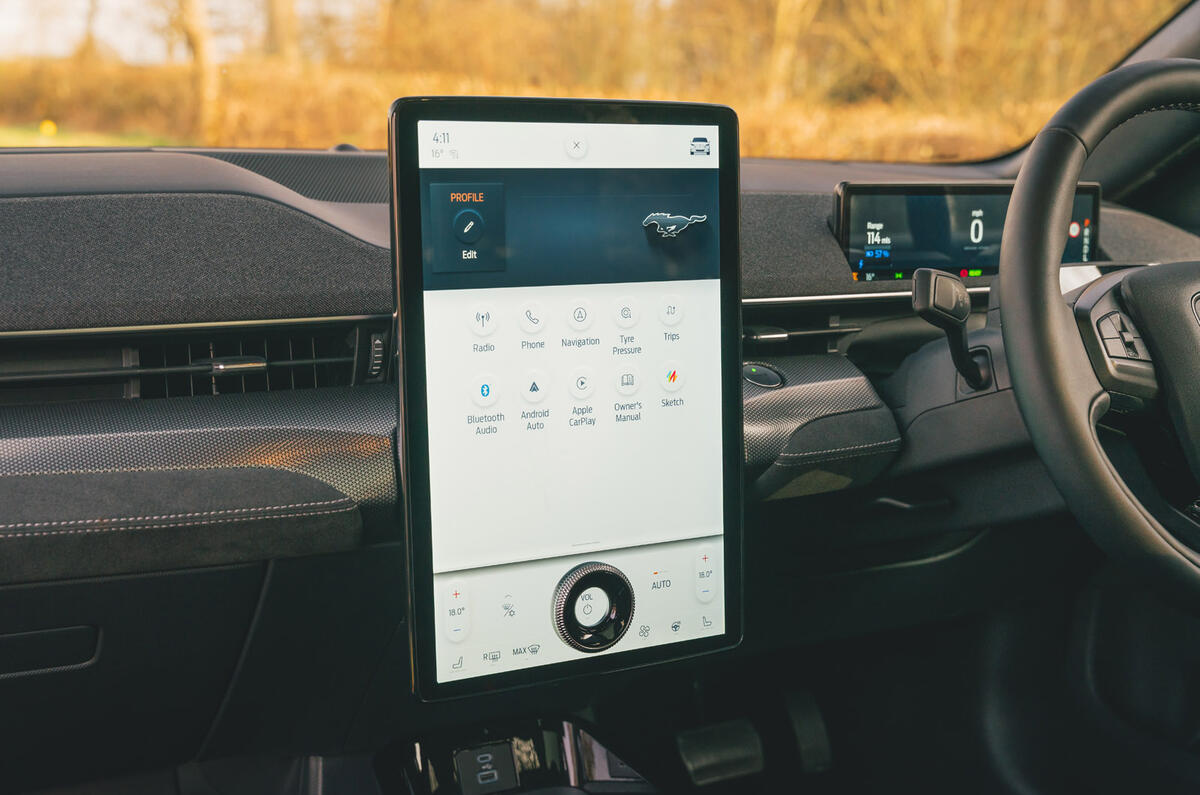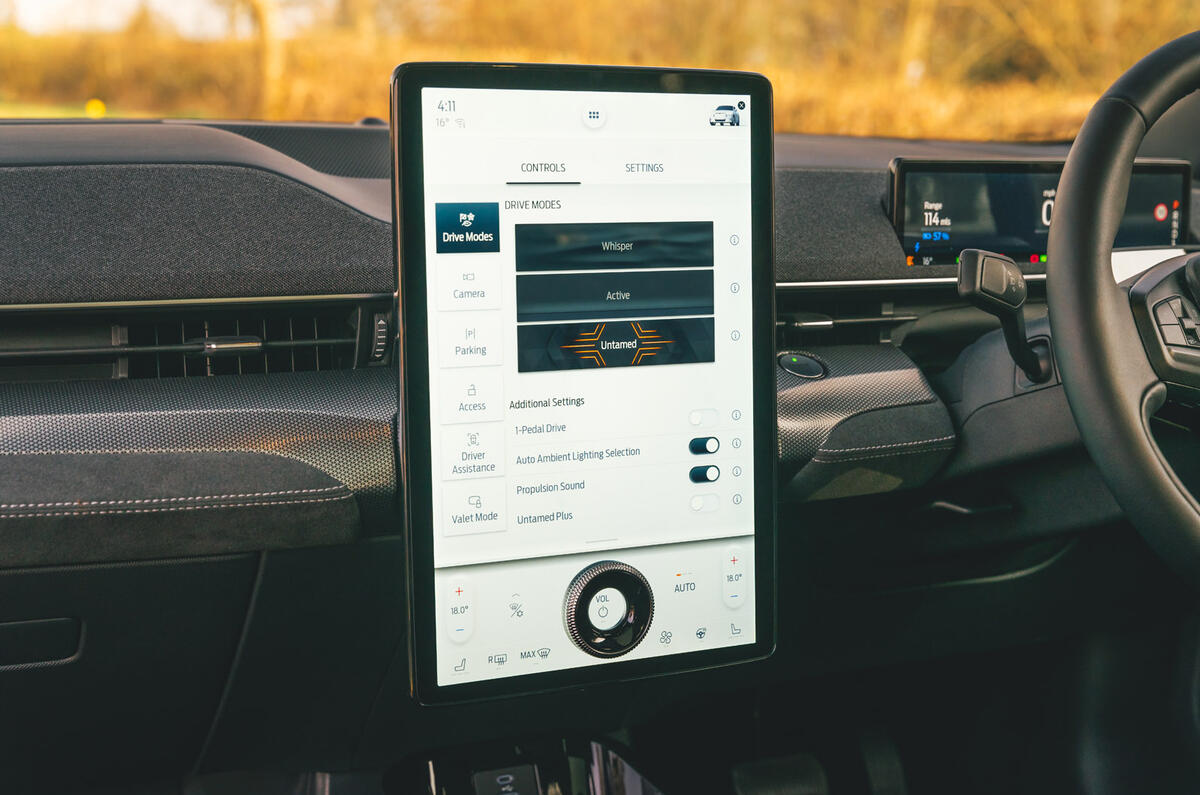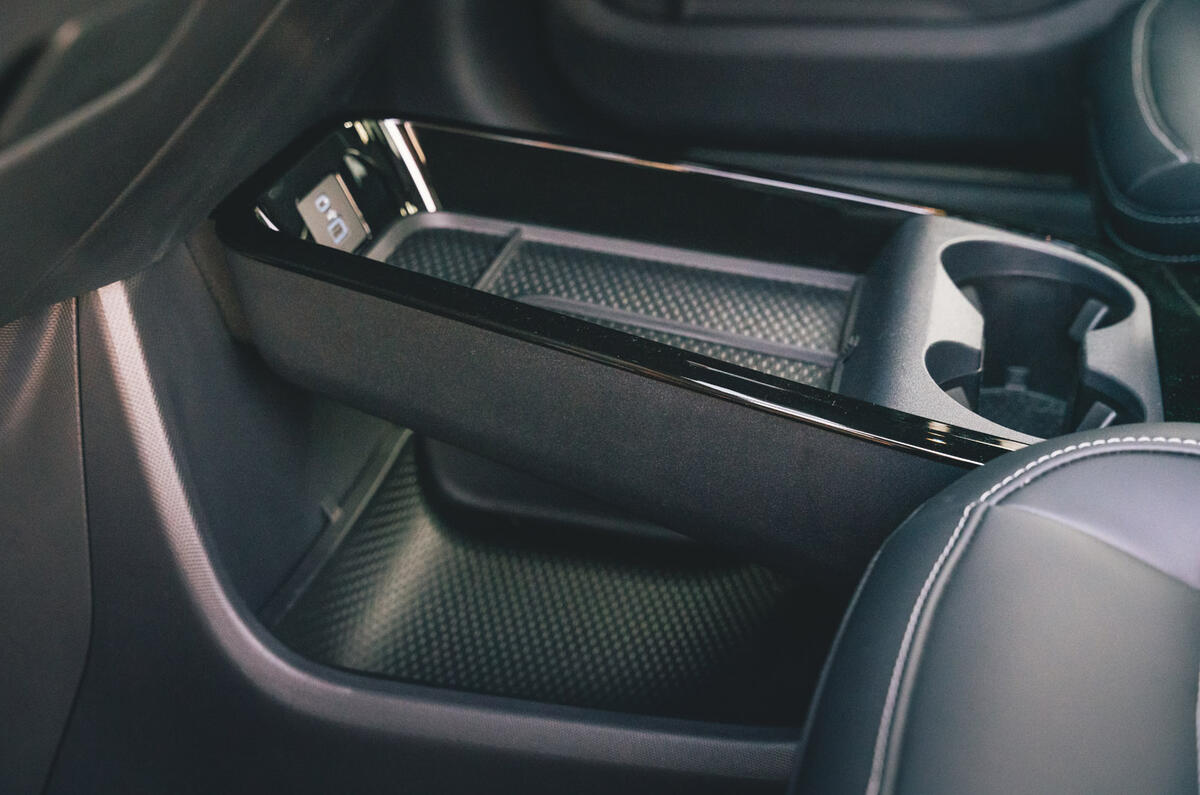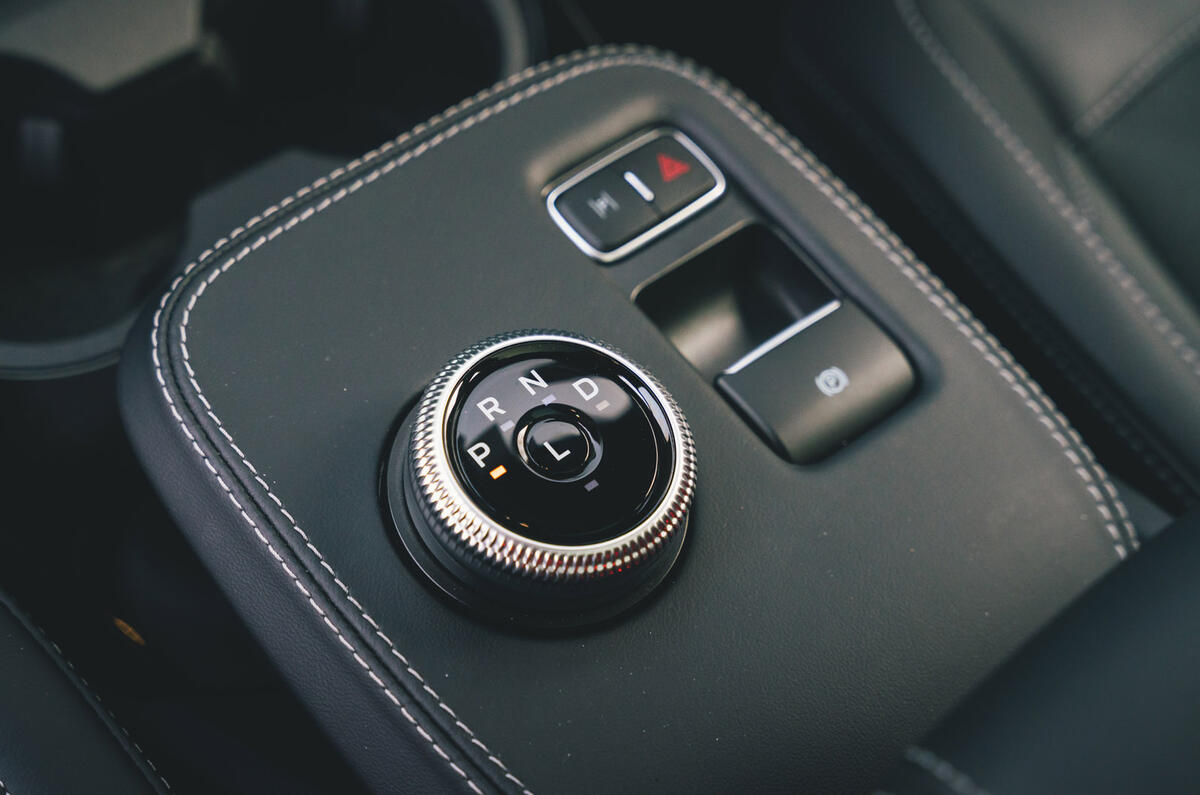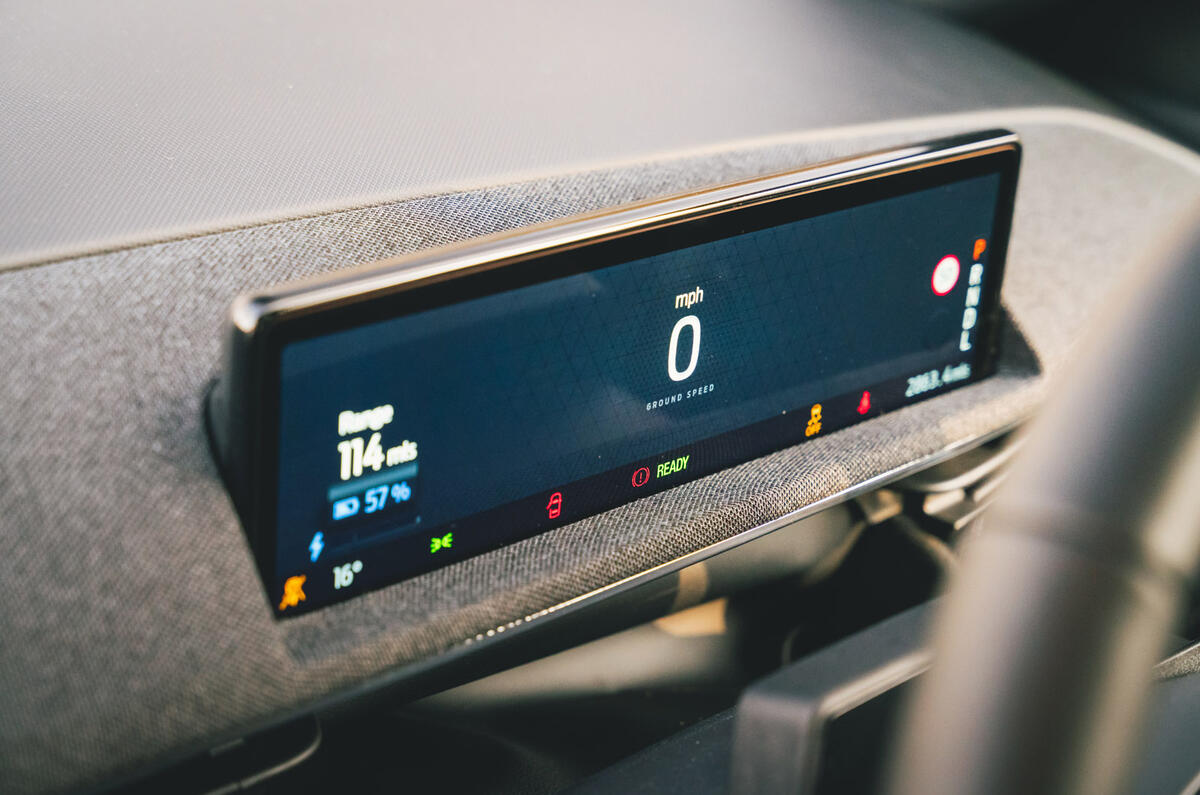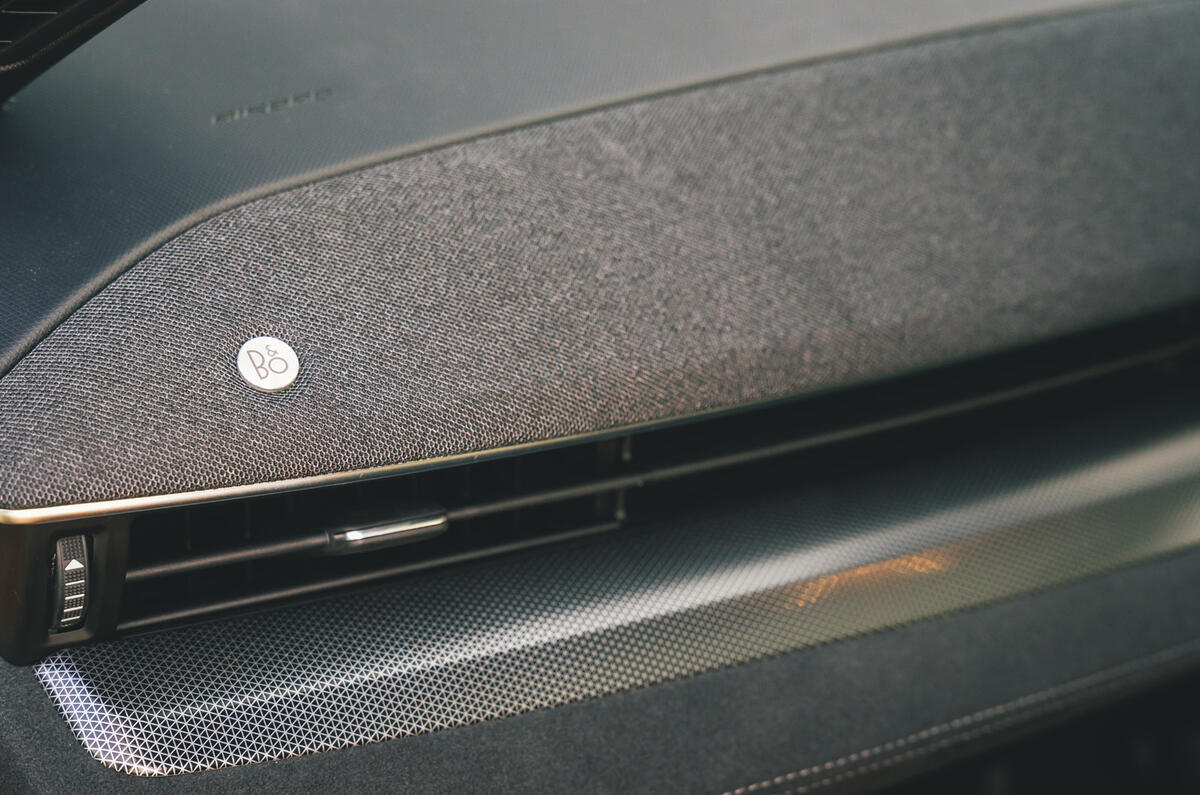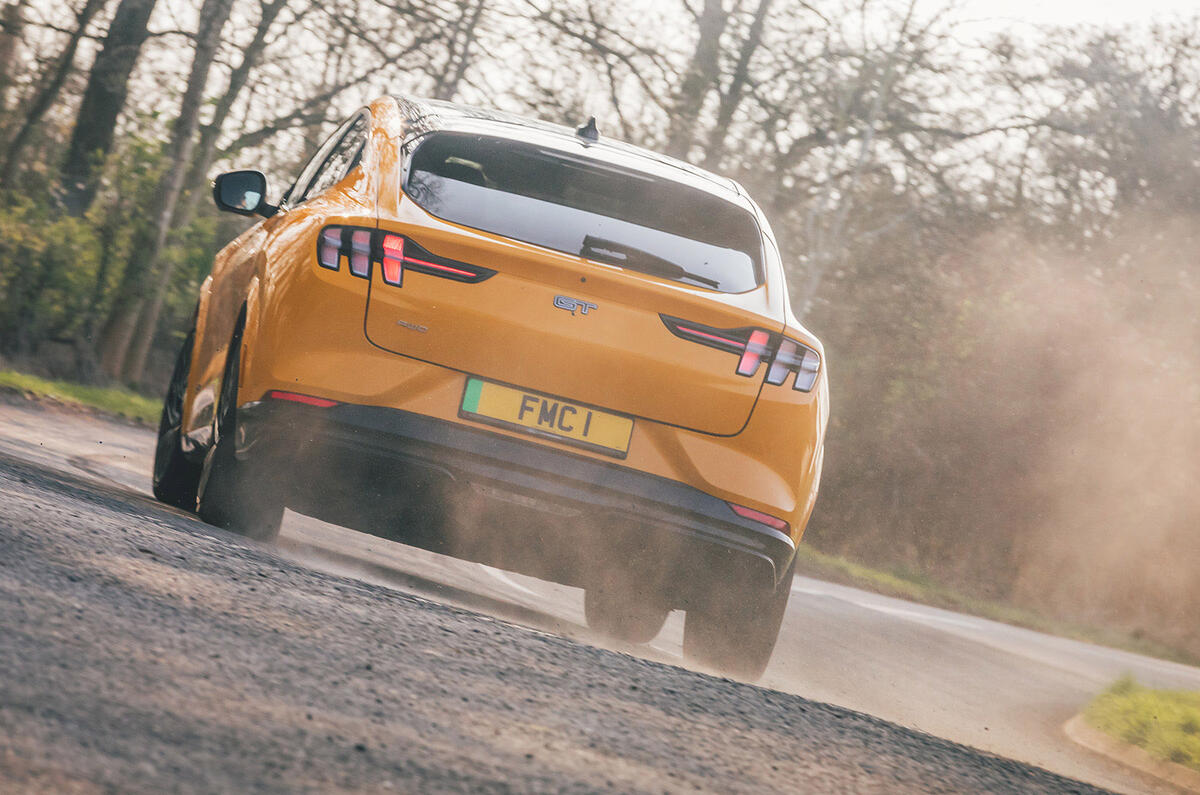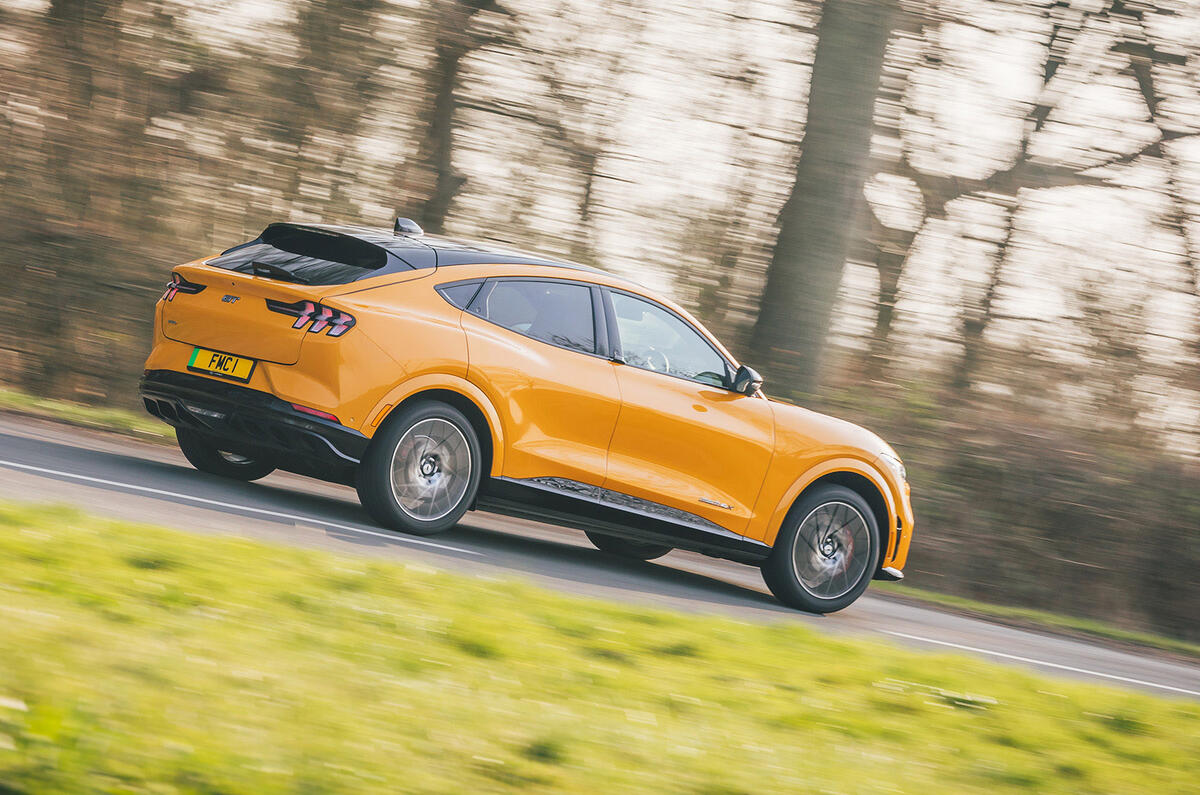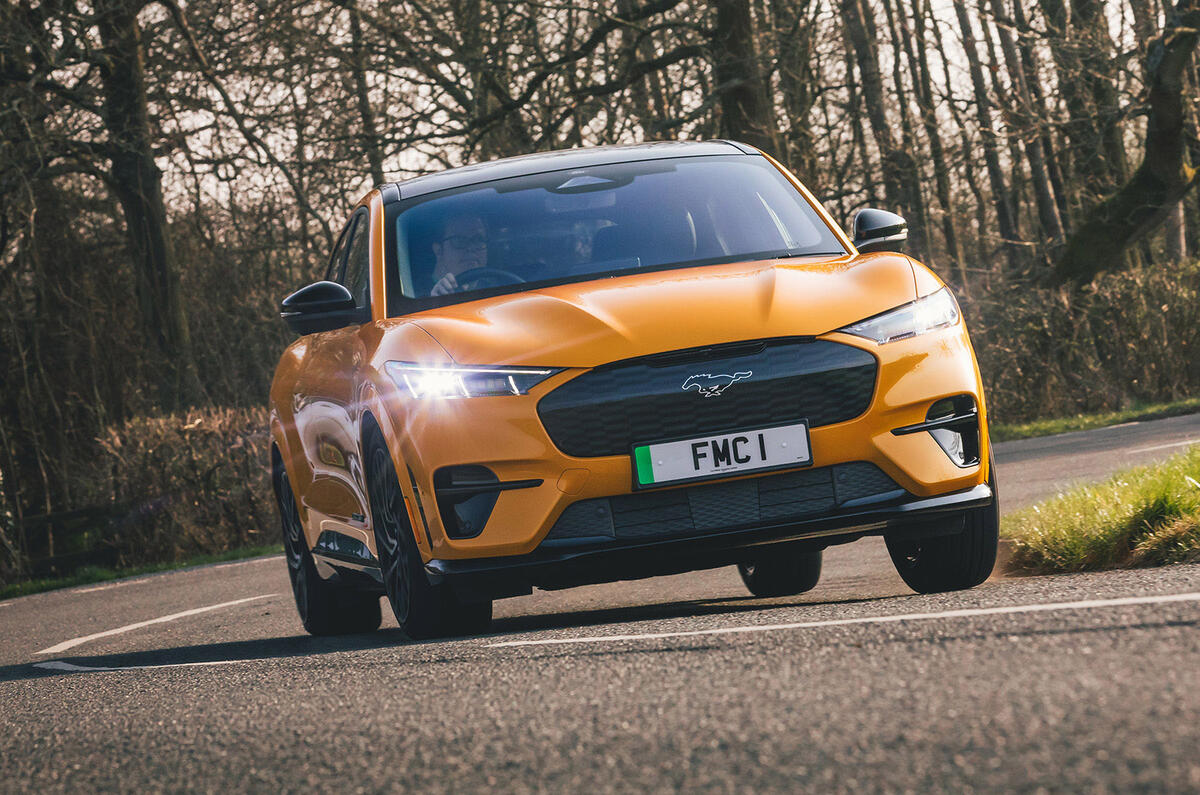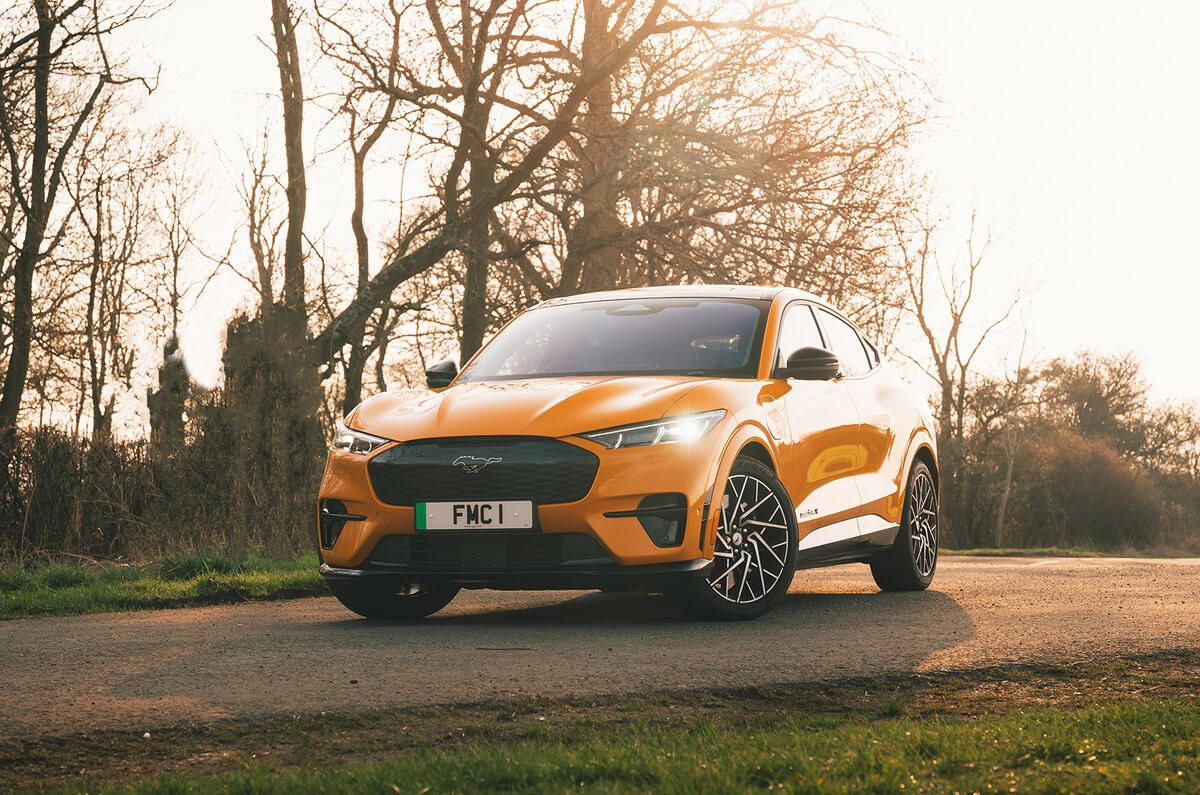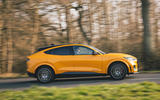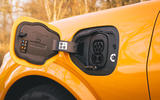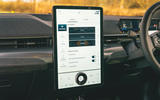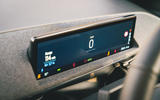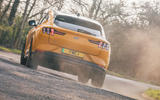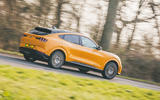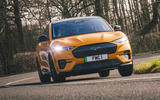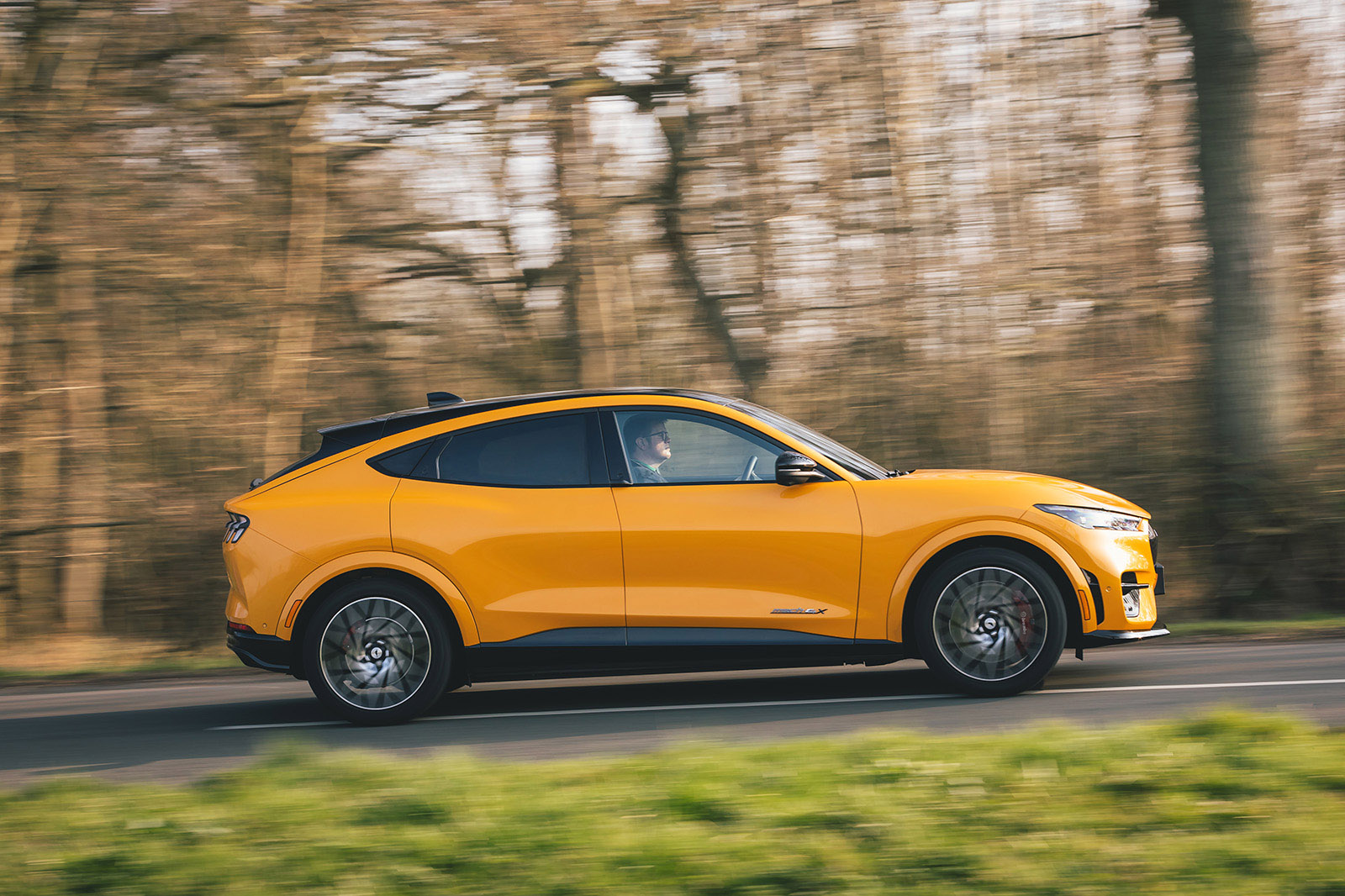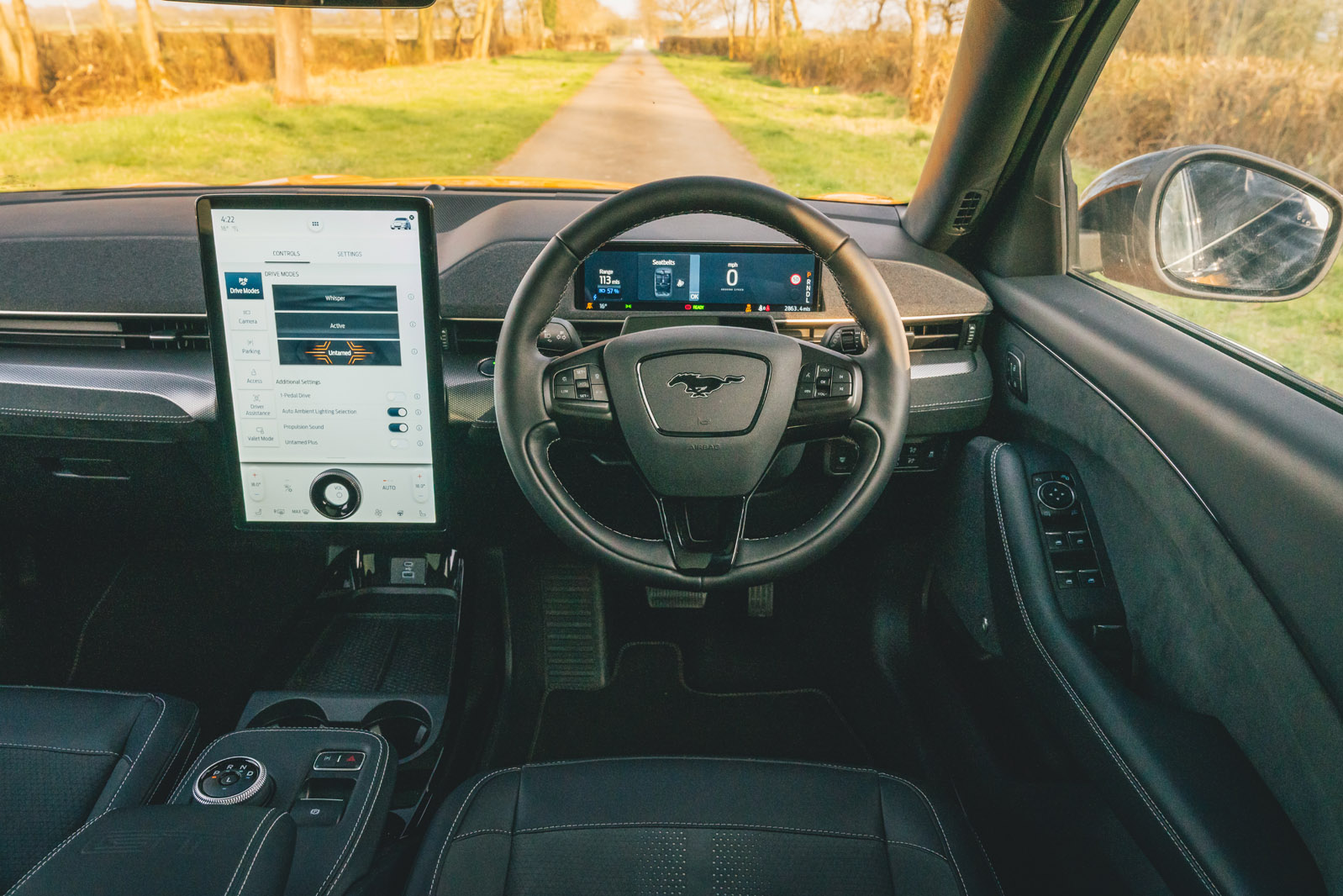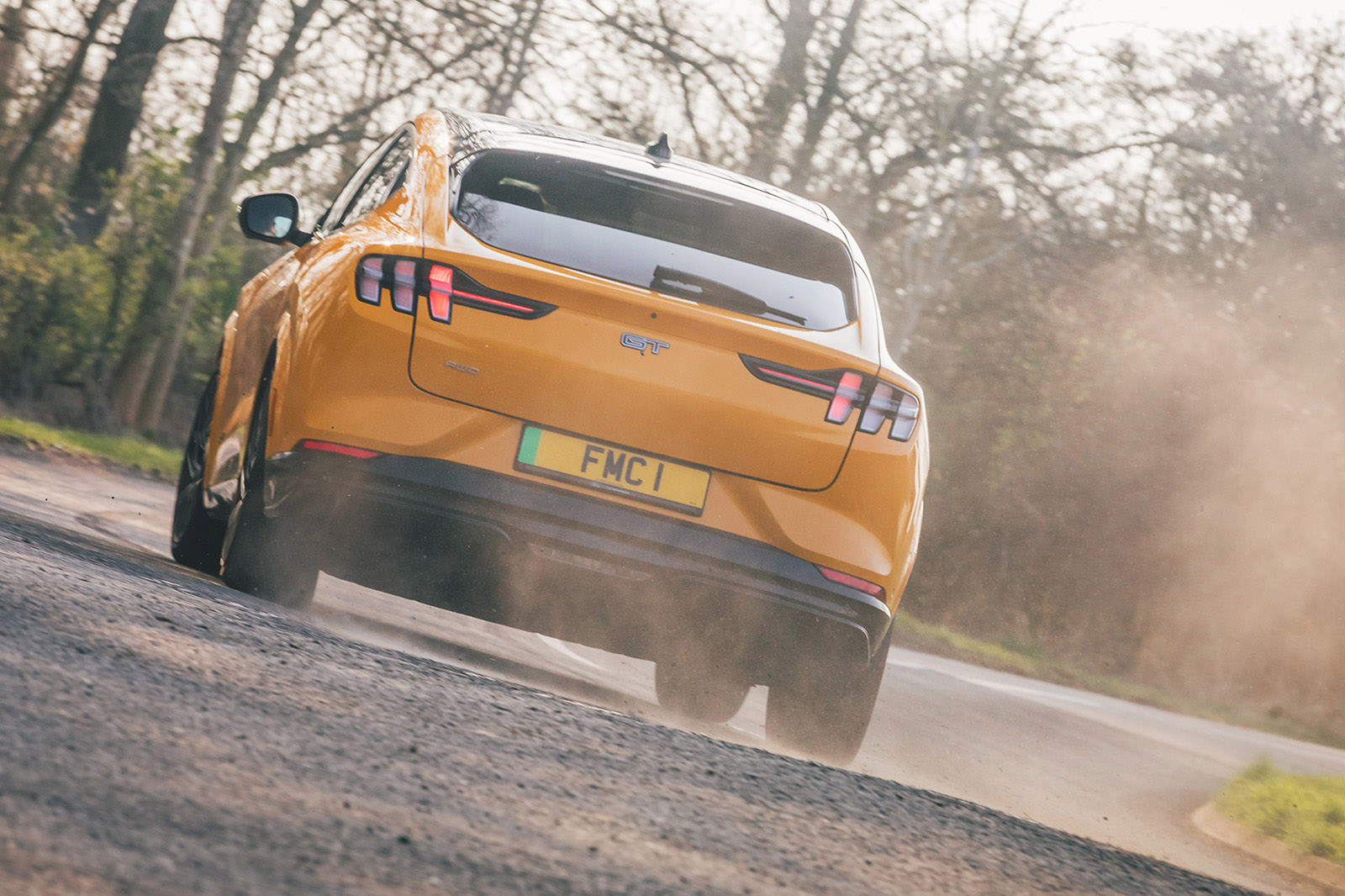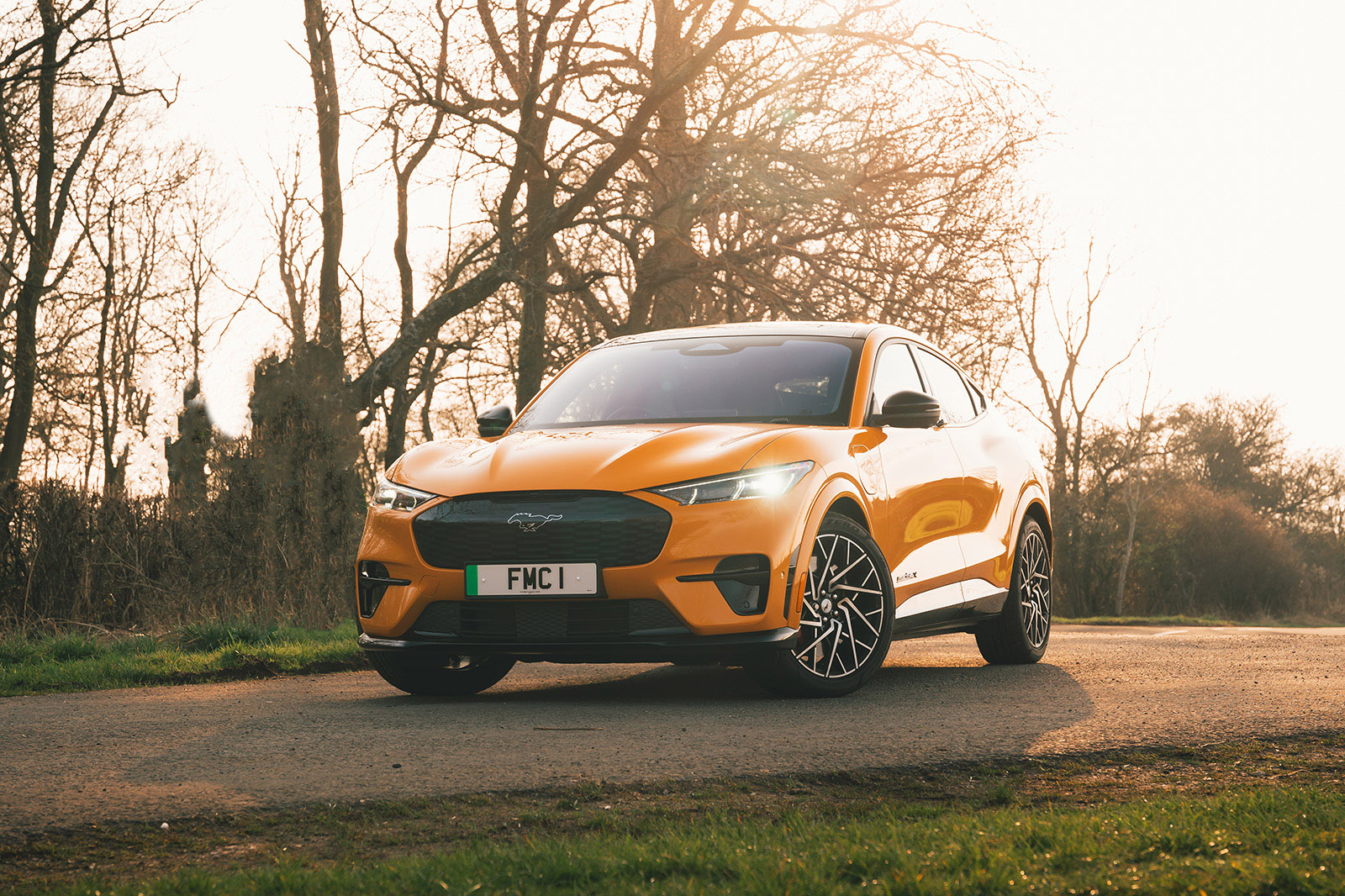Roominess is one of the main draws of the cabin of the Ford Mustang Mach-E GT, especially for those travelling in the second row, where the car offers plenty of head room and leg room for taller adults even with the optional panoramic roof fitted.
The ambience is pleasant, with some quite appealing textiles on its upper dashboard and door panels. The cabin could do with some extra performance flourish, though – perhaps some colourful accents or ‘GT’ detailing.
There are some eye-catching features but nothing that looks like chrome metal actually ends up feeling like it. Only when you interrogate the fixtures and fittings might you realise that you’ve actually got Ford Focus seats and a rebadged Focus steering wheel, as well as Focus parts-bin column stalks and other controls. They might pass muster on a £45k Ford Mustang Mach-E RWD, but they struggle to do so on something costing almost £70,000.
The driving position is straight and fairly comfortable if lacking some adjustability. Ford’s GT Performance seats have decent lateral support but leave your lower body neglected.
A downsized digital instrument screen ahead of the driver can easily be seen through the orbit of the steering wheel but conveys only a limited selection of information and isn’t as configurable in its layout as some drivers might like.
That the car has no head-up display seems a suspiciously contemporary criticism to make, but you notice the omission because you find yourself consulting that 15.5in, central, portrait-oriented touchscreen display for everything from driver assistance controls to trip computer data, and that shifts a considerable amount of focus from the road ahead.
There are two cargo compartments. There’s a ‘regular’ boot at the rear, which is quite wide but only averagely long and deep. The lightweight canvas load-bay cover for it is too easily dislodged by bulky bags or boxes, popping up off its moorings to obstruct your rear-view mirror visibility.
There’s also a smaller ‘frunk’ under the bonnet, which is quite shallow and is at least half-filled by the car’s two charging cables. Still, even if those cables are all you keep in it, it’s useful to have. The one frustration is that, like so many EV makers, Ford makes you use either the car’s interior bonnet release or an icon on the central infotainment screen to release the lid.
A button on the key fob would be so much more convenient, and when you will be likely to need your charging cable on an almost daily basis, access really ought to be easier than this.
Ford Mustang Mach-E GT multimedia system
Ford has sought to avoid one of the criticisms we level at cars too reliant on touchscreen consoles by grafting a large volume knob straight onto the bottom of the Mach-E’s 15.5in, portrait- oriented infotainment system. You can’t miss it, but you don’t use it much because there are volume shortcuts for the stereo (which sounds quite potent) on the steering wheel. Still, your passenger might be grateful to have it, and so were we.
The Microsoft-developed Sync 4A system is fairly easy to use once you learn to navigate it via the shortcut buttons around the edge of the screen, but hitting one at arm’s length, in a moving car, still requires too much concentration for our liking. Likewise, navigating through several screens to find a particular function toggle isn’t as simple as all that. The trip computer data is displayed here too; we’d prefer it in the instrument binnacle.
The system offers wireless device charging and wireless smartphone mirroring, both of which work consistently well.




